Darjeeling tea – you’ve probably heard its name whispered like a secret, and if you’re anything like me, your inner foodie is already itching to give it a try.
This brew, often called the “Champagne of Teas,” holds a mystique that’s hard to resist.
I mean, who wouldn’t want to take a sip of something with such a fancy title? I sure did!
But let’s clear the air first – Darjeeling Tea isn’t just one type of tea. It’s a whole family of teas, each with its own unique character.
Wrap your head around this: there are hundreds, even thousands, of varieties all bundled under the Darjeeling Tea umbrella.
And guess what? Each one requires its own special treatment. Yep, I can see the confusion creeping in, but don’t worry, I’m here to help.
Darjeeling Teas change like the seasons. Literally. The flavors shift from spring to summer to autumn, and guess what?
They even dance differently from year to year.
So, before you dive headfirst into the Darjeeling world, here are some basic tips to make a perfect cup of Darjeeling tea.
I’ll also share some helpful tips to avoid ending up with a brew that’s just not your jam.
What Is Darjeeling Tea?
Darjeeling tea is a special kind of tea that comes from a beautiful place called Darjeeling in India.
Rolling hills covered in lush green tea gardens, that’s where this tea comes from.
The tea has a unique and delicate taste that is both flowery and a bit fruity.
It’s often called the “Champagne of teas” because of its fancy and elegant taste.
It’s not like the strong black tea you might be used to, it’s more subtle and soothing.
One cool thing about Darjeeling tea is that it has different “flushes.”
No, not the kind you get on your cheeks, but the different times the tea leaves are plucked.
There’s the first flush, which happens in the spring, the second flush in the summer (my personal favorite), and the autumn flush.
Each flush gives the tea a slightly different taste, kind of like how seasons change the scenery.
Darjeeling tea isn’t just about the taste. It’s a part of the culture and history of the region.
The people who grow and pick the tea are experts at their craft, and their traditions have been passed down through generations.
I heard that the tea leaves are still hand-plucked by skilled workers who know exactly which leaves to choose for the best quality.

What You Need to Make Darjeeling Tea
Darjeeling tea is a delightful beverage with a unique flavor profile.
To make a perfect cup of Darjeeling tea, you’ll need a few essential items.
Let me guide you through the process:
1. Quality Darjeeling Tea Leaves
Start with good-quality Darjeeling tea leaves. Look for loose tea leaves or tea bags labeled as “Darjeeling.
The tea’s unique taste comes from the region’s climate and soil, so choose authentic Darjeeling tea for the best results.
2. Fresh Water
Water quality matters when brewing tea. Use fresh, cold water from the tap or a filtered source.
Avoid using water that has been sitting for too long or has a strong taste of minerals.
3. Tea Kettle or Pot
A tea kettle or pot is essential for heating water.
Choose one that’s clean and easy to handle. Electric kettles work well, too, as they offer precise temperature control.
4. Tea Infuser or Strainer
If you’re using loose tea leaves, a tea infuser or strainer is necessary to keep the leaves separate from the liquid.
This ensures a smooth cup of tea without any debris.
5. Teapot or Cup
You’ll need a teapot or a cup to brew and serve the tea. Make sure it’s clean and heat-resistant.
Using a teapot allows the tea leaves to expand and release their full flavor.
6. Timer
A simple kitchen timer will help you track the steeping time accurately.
Darjeeling tea has a delicate flavor, so steeping for the right duration is crucial to avoid bitterness.
7. Optional Additions
While Darjeeling tea is delightful on its own, you can enhance your experience with optional additions like honey, sugar, lemon, or milk.
Experiment to find your preferred flavor combination.
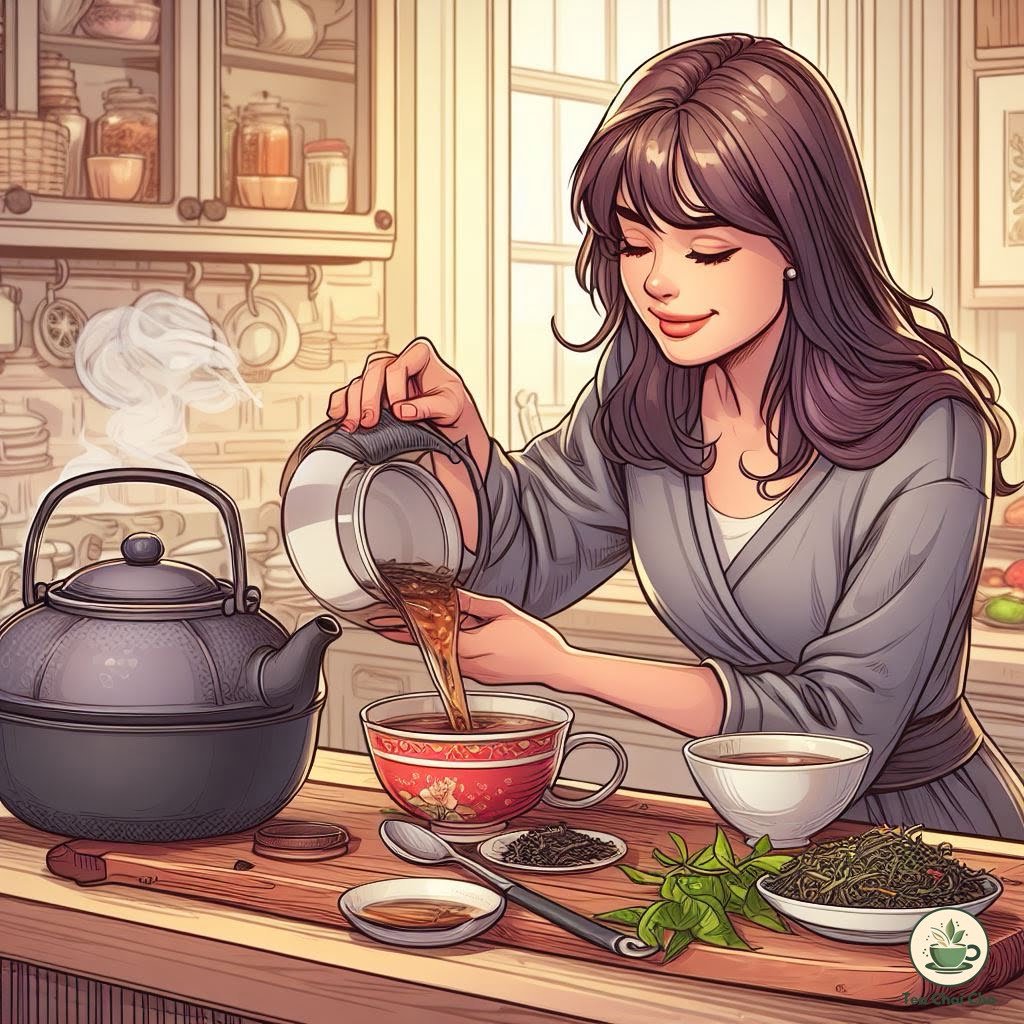
How to Make Darjeeling Tea: A Step-by-Step Guide
Darjeeling tea is renowned for its delicate flavors and soothing aroma. Making the perfect cup requires a bit of attention and care.
Here’s a simple guide to help you choose the right method and brewing preferences:
1. Choose Your Darjeeling Tea Leaves
Selecting high-quality tea leaves is essential for a satisfying cup of Darjeeling tea.
There are different flushes (harvest seasons) that yield distinct flavors – first flush (spring), second flush (summer), monsoon flush, and autumn flush.
Each has its unique characteristics, so consider your preference for light or robust flavors.
2. Decide on Loose Leaves or Tea Bags
Opt for loose leaves if you want more control over the brewing process and a richer flavor.
Tea bags offer convenience but might limit the full expression of the tea’s complexity.
3. Boil Fresh Water
Use fresh, cold water. Avoid using previously boiled water as it may have lost oxygen, affecting the tea’s taste.
Heat the water until it’s just about to boil – around 190°F (88°C) is ideal for Darjeeling tea.
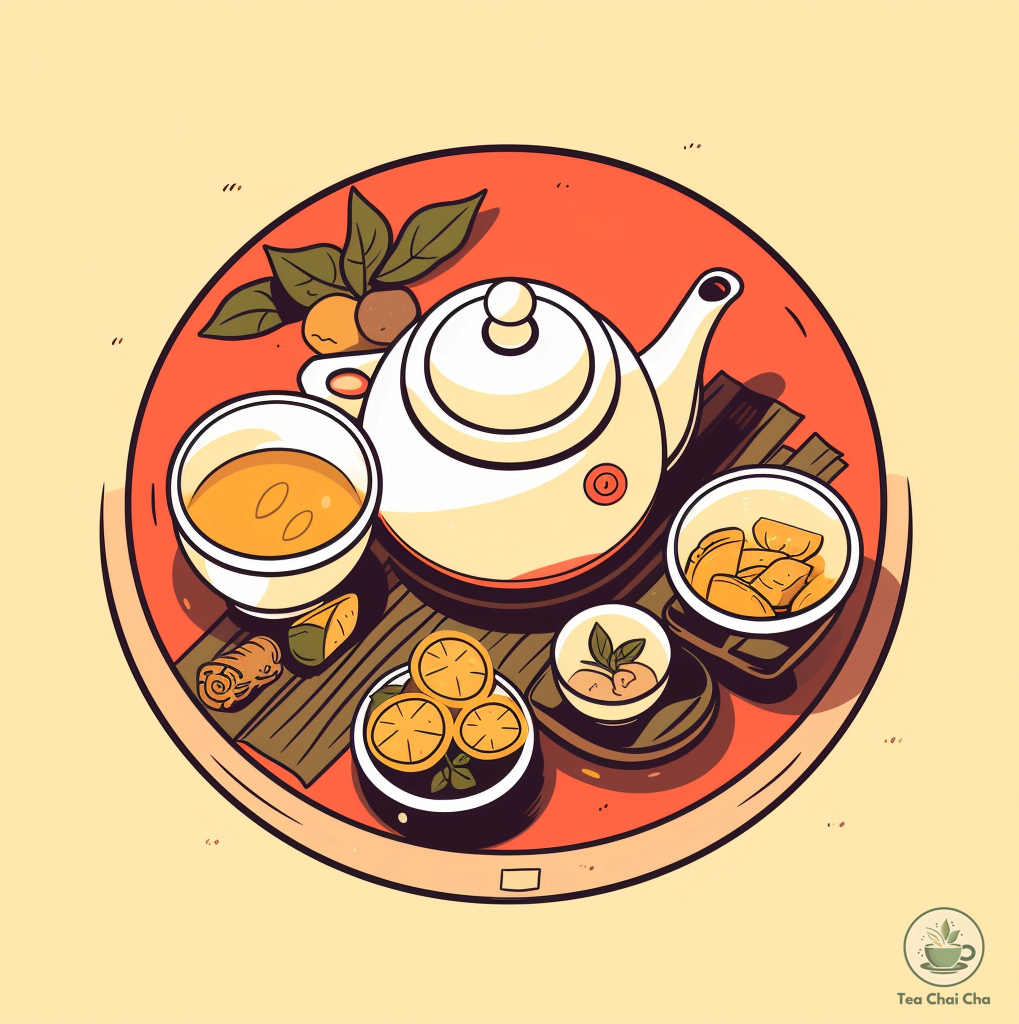
4. Pre-warm Your Teapot or Teacup
Pour a little hot water into your teapot or teacup and swirl it around to warm the vessel. Discard the water.
This step ensures the water temperature remains consistent during brewing.
5. Measure Tea Leaves
For every 8-ounce (240 ml) cup, use about 2 to 3 grams of loose Darjeeling tea leaves.
Adjust the amount according to your taste preferences.
6. Steeping Time
The steeping time depends on the flush and your taste preference. Generally, steeping times range from 2 to 4 minutes.
First flush teas may require shorter steeping (2-3 minutes) to preserve their delicate notes.
Second flush teas can be steeped a bit longer (3-4 minutes) to bring out their full-bodied flavors.
7. Begin Brewing
Pour the hot water over the tea leaves and let them steep. Cover the teapot or teacup to trap the aroma.
Steeping times can vary, so experiment to find your preferred strength.
8. Strain and Enjoy
Once the tea has steeped, use a fine mesh strainer or remove the infuser to catch the tea leaves. Pour the tea into your pre-warmed cup.
9. Savor the Flavor
Take a moment to enjoy the aroma before taking your first sip. Darjeeling tea is often enjoyed plain, but you can add a touch of honey, lemon, or milk if you prefer.

Darjeeling Tea Hot or Cold?
You can enjoy Darjeeling tea in both hot and cold versions. It gives you the choice to savor its delightful flavors in different ways.
When you want a cozy and soothing experience, prepare the tea by steeping it in hot water.
This brings out the rich aroma and taste, perfect for those chilly days or when you need a comforting sip.
On warmer days, you can easily transform Darjeeling tea into a refreshing cold beverage.
Brew the tea as you normally would, but let it cool down after steeping.
Then, add ice cubes to a glass and pour the cooled tea over them. You’ll experience a light drink that’s perfect for staying refreshed.
Whether you prefer to sip it hot or enjoy it cold, Darjeeling tea offers you a wonderful taste experience that suits your mood and the weather.
Brewing Guide for Darjeeling Tea (Iced + Hot)
| Tea Type | Water Temperature | Brewing Time for Hot Tea | Brewing Time for Iced Tea |
| First Flush | 180-190°F (82-88°C) | 2-4 minutes | 4-5 minutes |
| Second Flush | 180-190°F (82-88°C) | 3-5 minutes | 5-6 minutes |
| Monsoon Flush | 190-200°F (88-93°C) | 3-5 minutes | 5-6 minutes |
| Autumn Flush | 190-200°F (88-93°C) | 4-6 minutes | 6-7 minutes |
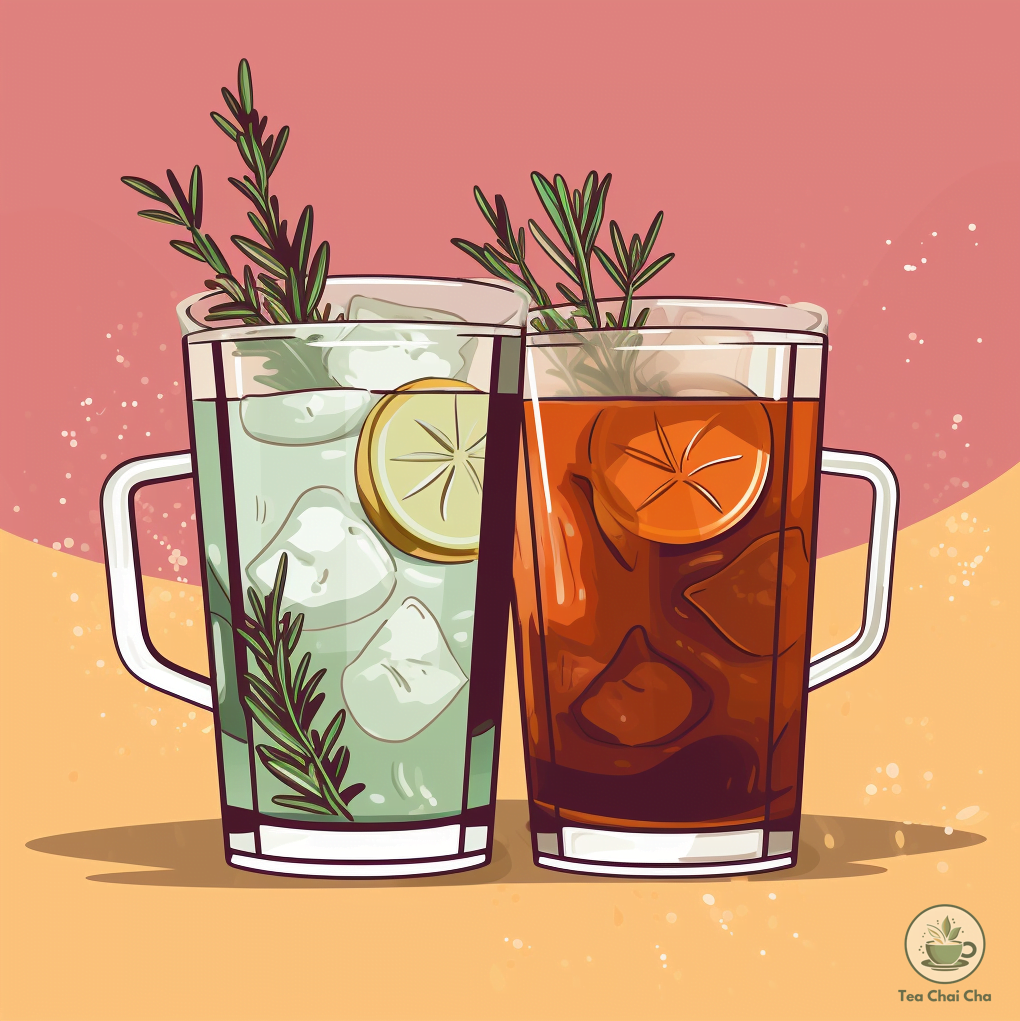
How to Make Iced Darjeeling Tea (Cold Brew + Traditional)
You can make Iced Darjeeling Tea using different methods – cold brew and traditional iced tea. Here are the recipes for both:
Iced Darjeeling Tea (Cold Brew)
Ingredients
- 2 tablespoons Darjeeling tea leaves (or 2 tea bags)
- 4 cups cold water
Steps
1. In a pitcher, add 2 tablespoons of Darjeeling tea leaves or place 2 tea bags.
2. Pour in 4 cups of cold water.
3. Stir gently to make sure the tea leaves are fully submerged.
4. Cover the pitcher and place it in the refrigerator.
5. Let the tea steep for about 8 to 12 hours. This slow steeping process brings out the delicate flavors without bitterness.
6. Once steeped, remove the tea leaves or tea bags.
7. Serve the cold-brewed Darjeeling tea over ice cubes.
8. You can add sweetener, lemon slices, or mint leaves according to your preference.
Iced Darjeeling Tea (Traditional Method)
Ingredients
- 2 tablespoons Darjeeling tea leaves (or 2 tea bags)
- 4 cups hot water
- Sweetener (optional)
- Lemon slices or mint leaves (optional)
Steps
1. Boil 4 cups of water and let it cool for a minute or two.
2. In a teapot or heatproof pitcher, add 2 tablespoons of Darjeeling tea leaves or place 2 tea bags.
3. Pour the hot water over the tea leaves or bags.
4. Let the tea steep for about 3 to 5 minutes, depending on your taste preference. This will yield a stronger brew suitable for iced tea.
5. Remove the tea leaves or tea bags from the pot.
6. If desired, add sweetener while the tea is still warm, so it dissolves easily.
7. Allow the tea to cool to room temperature before placing it in the refrigerator to chill.
8. Once cooled, serve the traditional iced Darjeeling tea over ice cubes.
9. Garnish with lemon slices or mint leaves if you like.
| Method | Brewing Time | Temperature |
| Cold Brew | 8 to 12 hours | No heat (refrigerate) |
| Traditional Iced Tea | 3 to 5 minutes | Around 175°-190°F (80°-88°C), then cool |
Factors That Affect the Flavor of Darjeeling Tea
Darjeeling tea is known for its unique and delicate flavor profile, influenced by various factors that come together during its growth and processing.
Here are some key factors to consider when choosing Darjeeling tea:
1. Altitude of the Tea Garden
The altitude at which the tea is grown plays a significant role in its flavor.
Darjeeling tea gardens are situated at different elevations, such as high, mid, and low-altitude gardens.
Teas grown at higher altitudes tend to have a more nuanced and complex flavor due to the slower growth and cooler temperatures.
These teas often have floral and fruity notes.
2. Flush Season
Darjeeling tea is harvested in different flushes or seasons – first flush, second flush, monsoon flush, and autumn flush.
Each flush has a distinct flavor profile.
First flush teas, plucked in spring, are lighter and more astringent with floral notes.
Second flush teas, harvested in late spring, are fuller-bodied with muscatel grape and fruity flavors.
| Flush Season | Harvest Time | Flavor Profile | Characteristics |
| First Flush | Spring (Mar-Apr) | Light and delicate | 1. Bright and pale liquor 2. Floral and fresh aroma 3. Crisp and astringent taste 4. Citrus and grassy notes 5. “Champagne of Teas” |
| Second Flush | Late Spring (May-Jun) | Muscatel and fruity | 1. Deeper amber liquor 2. Prominent muscatel grape aroma 3. Rich and full-bodied taste 4. Stone fruit and sweet spice notes 5. Balanced astringency |
| Monsoon Flush | Monsoon Season (Jul-Aug) | Robust and earthy | 1. Darker liquor 2. Strong malty aroma 3. Bold and robust taste 4. Notes of wet earth and wood 5. Used in blends |
| Autumn Flush | Autumn (Oct-Nov) | Mellow and balanced | 1. Varied liquor color 2. Mellow aroma with a mix of characteristics 3. Smooth and well-rounded taste 4. Ripe fruit and nut notes 5. Varied flavor influenced by weather |
3. Plucking and Processing
The way the tea leaves are plucked and processed can impact the flavor.
Tea leaves with more tips (bud and the first two leaves) generally yield a sweeter and smoother brew.
The oxidation level during processing also affects the flavor.
Green teas are minimally oxidized and have a fresh and grassy taste, while fully oxidized teas have a deeper, richer flavor.
4. Tea Cultivar
The specific tea plant cultivar used in Darjeeling gardens can influence flavor.
Traditional Chinese cultivars like Camellia sinensis sinensis and local cultivars like Camellia sinensis assamica are common in Darjeeling.
These cultivars contribute to the tea’s unique taste profile.
5. Terroir
The region’s climate, soil composition, and environmental conditions collectively contribute to the terroir, which shapes the tea’s flavor.
Darjeeling’s misty and cool climate, combined with its unique soil, imparts a distinctive character to the tea.
6. Oxidation and Processing
The oxidation process, which occurs after plucking, can vary based on the tea type.
Black Darjeeling tea is fully oxidized, resulting in a robust flavor with caramel and fruity undertones.
On the other hand, oolong Darjeeling tea is partially oxidized, offering a balance between black and green tea flavors.
7. Storage and Aging
Darjeeling tea, especially high-quality ones, can develop more complex flavors when properly stored and aged.
Over time, the tea may mellow, enhancing its character and creating a smoother taste.
8. Brewing Technique
How you brew your Darjeeling tea can greatly impact the flavor.
Using water that’s too hot or steeping for too long can result in bitterness.
Follow the recommended brewing temperature and time to get the best flavor from your tea.

Tips for Choosing the Best Darjeeling Black Tea
here are some simple tips to help you choose the right Darjeeling tea:
Understand Darjeeling Flush
- Darjeeling tea comes in different flushes: first, second, and autumn.
- First flush is delicate with floral notes, second flush is bold with muscatel flavors, and autumn flush is mellow.
- Choose based on your taste preference.
| Flush | Description | Flavor and Characteristics | Best For |
| First Flush | Harvested in spring, light and delicate leaves. | Floral, fresh, and brisk taste. | Those who prefer a light, refreshing cup. |
| Second Flush | Picked in summer, mature leaves with more color. | Muscatel notes, fuller body, and aroma. | People who like bold flavors. |
| Monsoon | Plucked during rainy season, less distinct leaves. | Mellow taste, less complexity. | Those seeking a softer, gentler tea. |
| Autumnal | Harvested in autumn, robust and mature leaves. | Rich, deep flavors with a fruity touch. | Those who enjoy stronger brews. |
| Clonal | From specific tea plant clones, consistent quality. | Unique flavors, floral or fruity hints. | Tea enthusiasts exploring variety. |

Check Darjeeling Grade
- Darjeeling teas are graded like FTGFOP (Fine Tippy Golden Flowery Orange Pekoe).
- Higher grades usually have better flavor and aroma, but can be pricier.
| Grade | Description | Leaf Appearance | Flavor and Characteristics | Best Use |
| SFTGFOP | Super Fine Tippy Golden Flowery Orange Pekoe | Whole leaves with golden tips. | Delicate, floral, and nuanced taste. | Perfect for savoring the aroma. |
| FTGFOP | Fine Tippy Golden Flowery Orange Pekoe | High-quality leaves with some tips. | Bright, aromatic, and flavorful. | Ideal for a refined tea experience. |
| SFTGFOP1 | Another variation of the highest grade. | Similar to SFTGFOP but exceptional. | Complex, subtle, and sophisticated. | Connoisseurs looking for the best. |
| FTGFOP1 | Similar to FTGFOP but of exceptional quality. | Fine, well-crafted leaves. | Delicate and rich flavor profile. | For those seeking refined taste. |
| TGFOP | Tippy Golden Flowery Orange Pekoe | Leaves with some tips, good quality. | Bright, brisk, and aromatic. | Versatile for various occasions. |
Aroma and Flavor
- Smell the dry leaves; a good Darjeeling has a distinct and pleasant aroma.
- Brew a small sample to taste the flavor profile – floral, fruity, nutty, etc.
Leaf Appearance
- High-quality Darjeeling tea has well-rolled, whole leaves with tips.
- Avoid teas with lots of broken leaves or dust, as they might lack flavor.
Origin and Estate
- Different tea estates in Darjeeling produce unique flavors due to soil and altitude.
- Look for teas from well-known estates for a consistent taste.
Freshness Matters
- Opt for recent harvests; fresher tea retains better flavors.
- Check the packaging date if possible.
Packaging
- Tea leaves are sensitive to light, moisture, and air.
- Choose tea in airtight, resealable packaging to keep it fresh.
Research the Seller
- Buy from reputable sellers or brands known for quality.
- Read reviews and ask for recommendations if you’re unsure.
Consider Organic and Ethical
- Organic Darjeeling teas avoid pesticides, which can enhance the flavor.
- Some teas are also certified fair trade, supporting ethical practices.
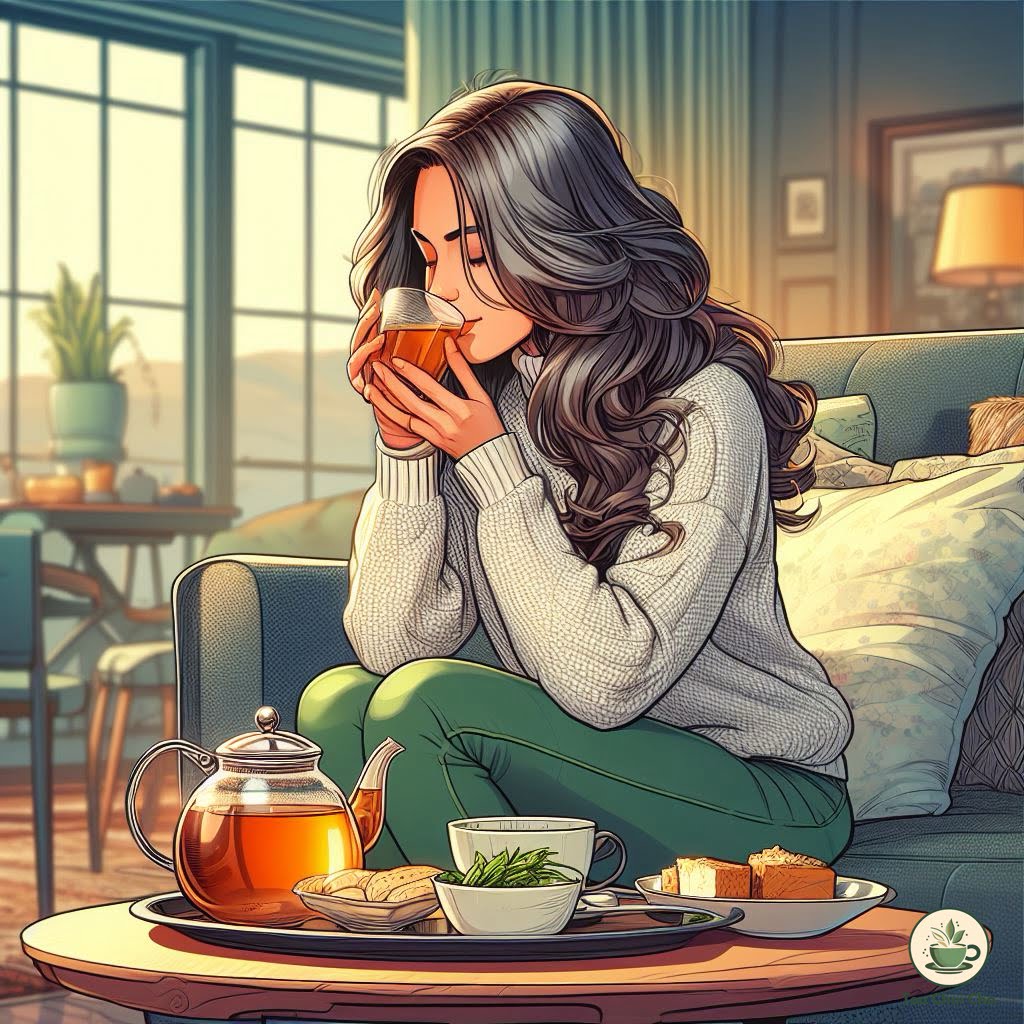
How to Make Darjeeling Tea Taste Good – Flavor Variations
Here are a few things you can do to tweak the taste of Darjeeling tea:
Darjeeling Tea Smoothie
Brew a cup of Darjeeling tea and let it cool. Blend it with some frozen fruits like berries, a banana, and a splash of yogurt or milk. It’s a tasty and healthy smoothie!
Darjeeling Honey Infusion
Steep Darjeeling tea as usual, then let it cool a bit. Add a drizzle of honey and a squeeze of lemon. It’s a soothing drink perfect for a chilly evening.
Darjeeling Green Tea Fusion
Mix Darjeeling tea with green tea for a unique combination. Steep them together and enjoy a blend of different flavors.
Darjeeling Mocktail
Brew strong Darjeeling tea and let it chill. In a glass, mix the chilled tea with some cranberry juice and a splash of lime. Garnish with a mint leaf for a fancy mocktail.
Darjeeling Ginger Zing
Brew Darjeeling tea and add a few slices of fresh ginger while steeping. This will give your tea a delightful spicy kick.
Darjeeling Coconut Delight
Brew Darjeeling tea and let it cool slightly. Then mix it with coconut water for a tropical twist. It’s a great hydrating option!
Darjeeling Vanilla Tea
Add a drop or two of vanilla extract to your Darjeeling tea. This simple addition can enhance the tea’s flavor profile in a wonderful way.
Darjeeling Latte
Make a strong cup of Darjeeling tea, and then warm up some milk. Mix them together and add a sprinkle of cinnamon or nutmeg if you want extra flavor.
Darjeeling Sparkler
Brew Darjeeling tea and let it chill. Then, pour it into a glass with some sparkling water for a bubbly and light drink.
Darjeeling Herbal Blend
Mix Darjeeling tea with a herbal tea like chamomile or mint. This can create a unique and soothing blend of flavors.
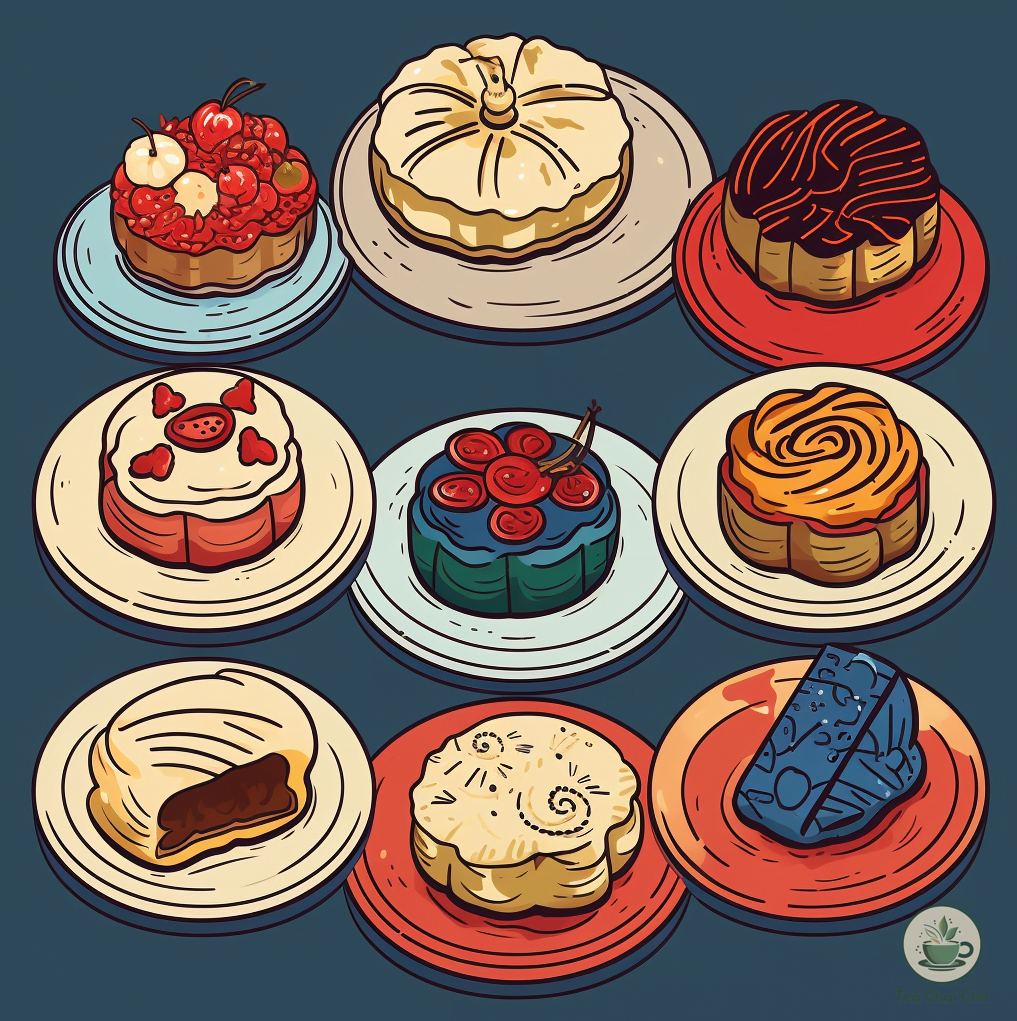
Food Pairing with Darjeeling Tea
When it comes to enjoying Darjeeling tea to the fullest, pairing it with the right foods can enhance your experience. Here are some delightful options to consider:
Light Pastries and Baked Goods
Pairing Darjeeling tea with light pastries, such as scones, croissants, or muffins, is a classic choice.
The subtle floral and fruity notes of Darjeeling tea complement the buttery and flaky textures of these baked treats.
The tea’s gentle astringency can help cleanse your palate between bites.
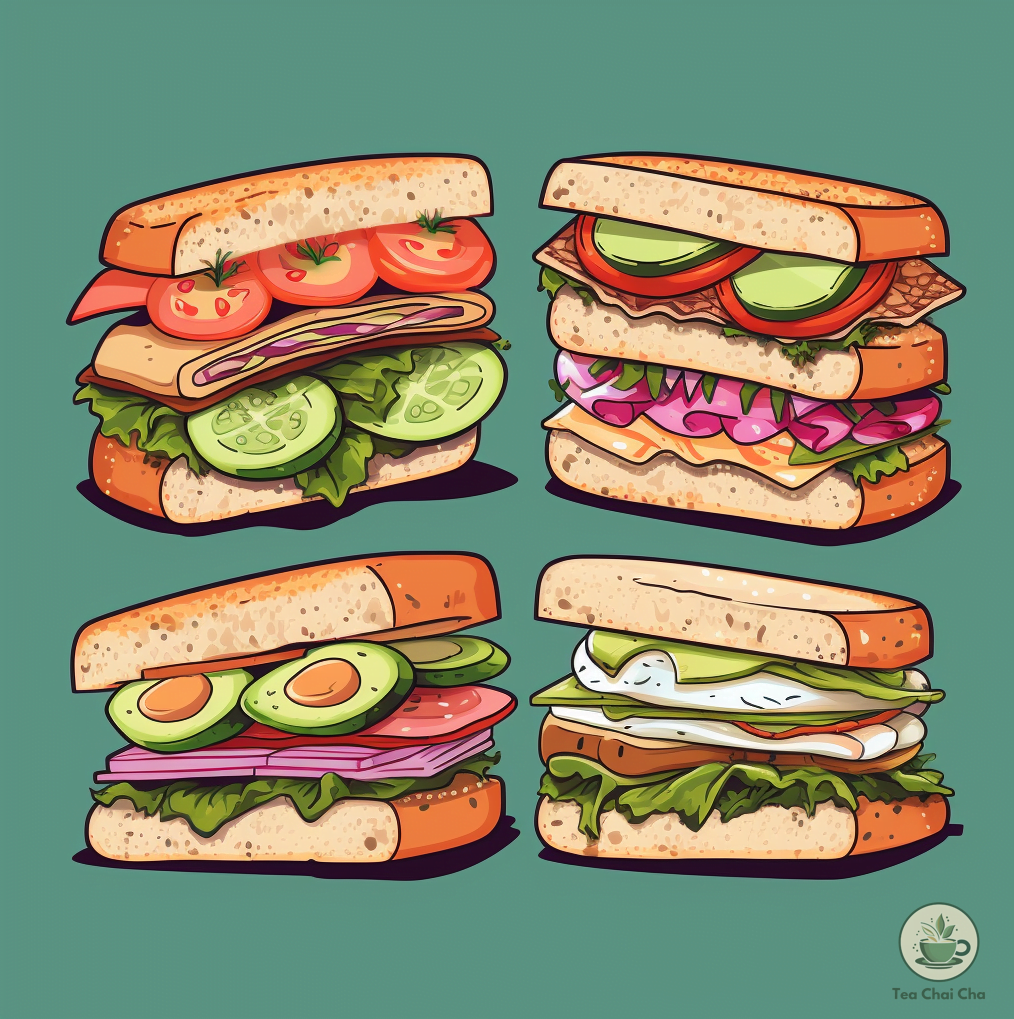
Finger Sandwiches and Tea Sandwiches
I love sipping Darjeeling tea alongside dainty finger sandwiches or tea sandwiches.
The tea’s delicate flavors harmonize with fillings like cucumber, smoked salmon, egg salad, or cream cheese.
The refreshing qualities of the tea can balance the richness of the sandwich fillings.
Fresh Fruits
Pairing Darjeeling tea with fresh fruits is a delightful way to contrast the flavors.
The muscatel notes of tea blend well with fruits like apricots, peaches and pears.
The natural sweetness of the fruits complements the tea’s floral undertones.
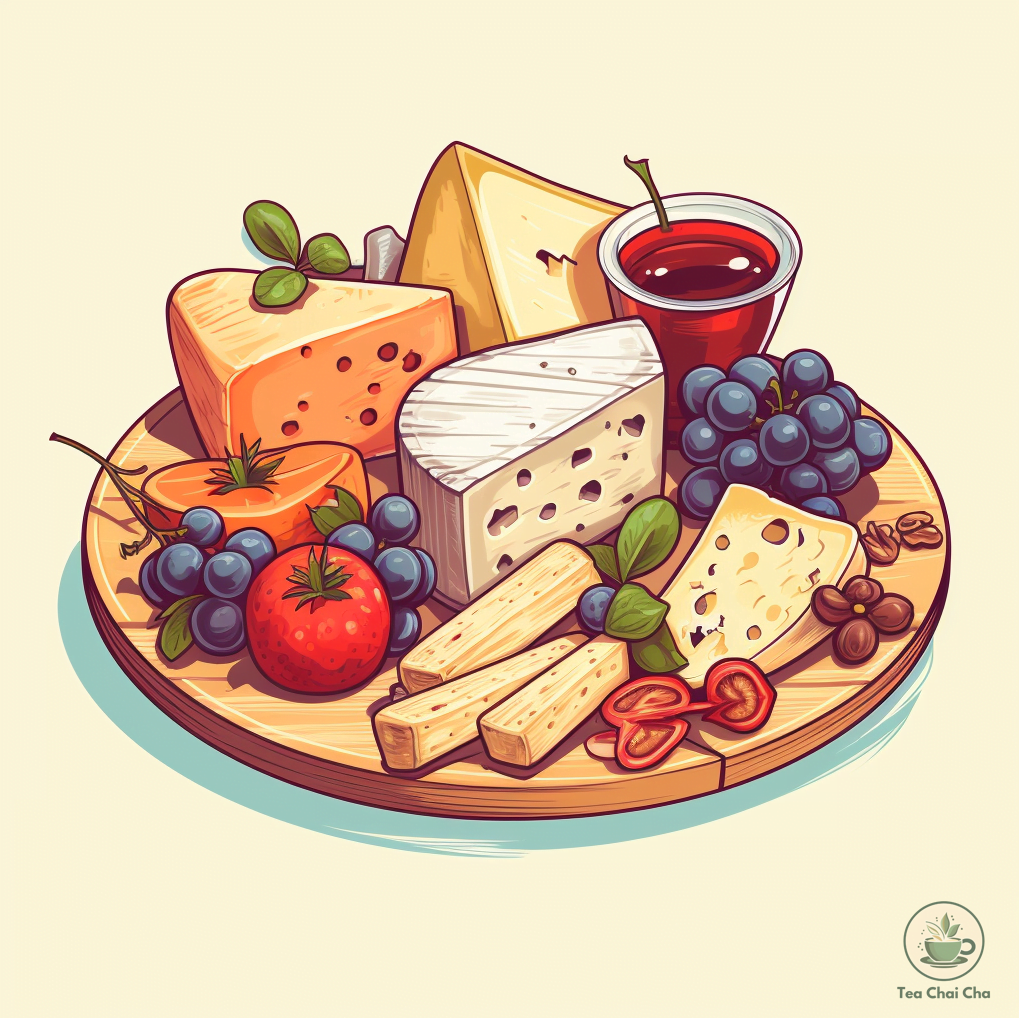
Mild Cheeses
If you enjoy cheese, try pairing Darjeeling tea with mild options like Brie, Camembert, or Gouda.
The tea’s light astringency can cut through the creamy textures of the cheese, creating a harmonious balance of flavors.
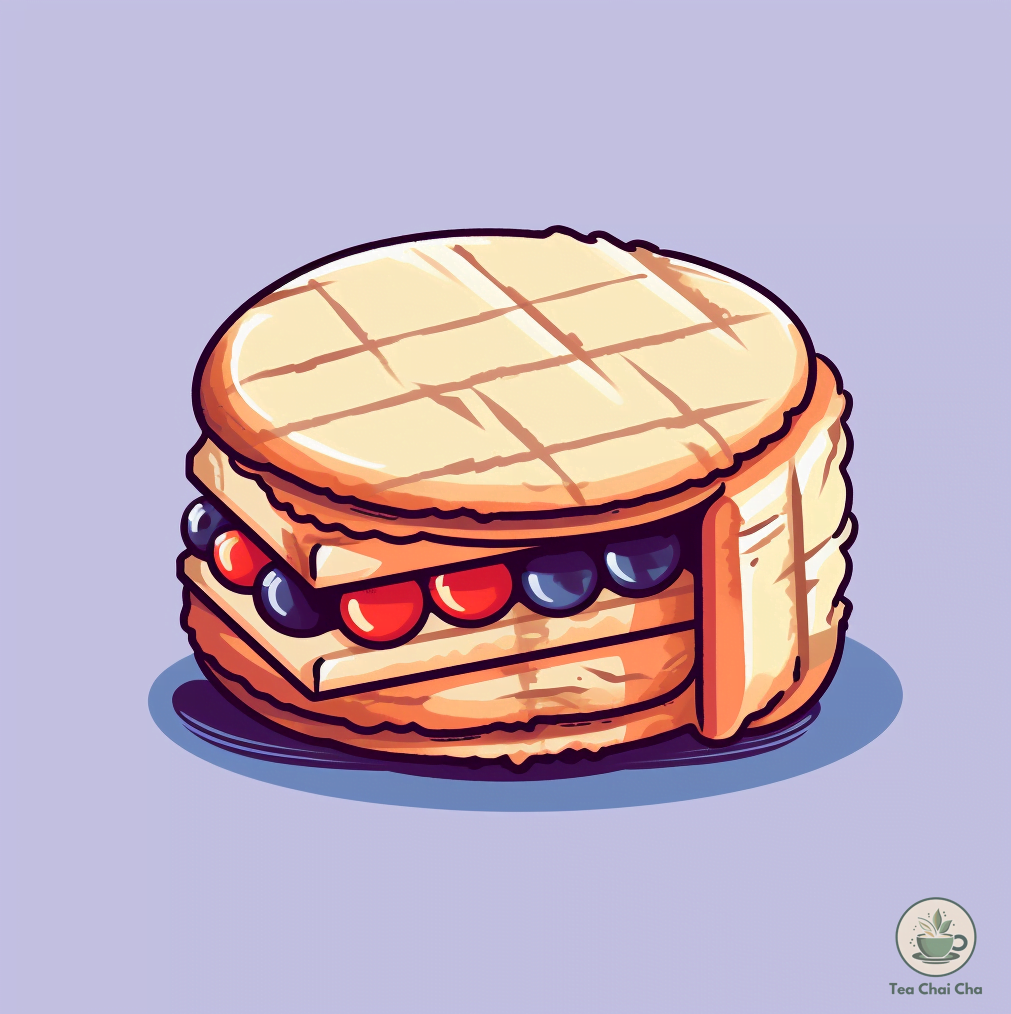
White Chocolate or Shortbread
For a sweet pairing, consider white chocolate or buttery shortbread cookies.
Darjeeling tea’s nuanced taste can be enhanced by the subtle sweetness of white chocolate or the rich, crumbly texture of shortbread.
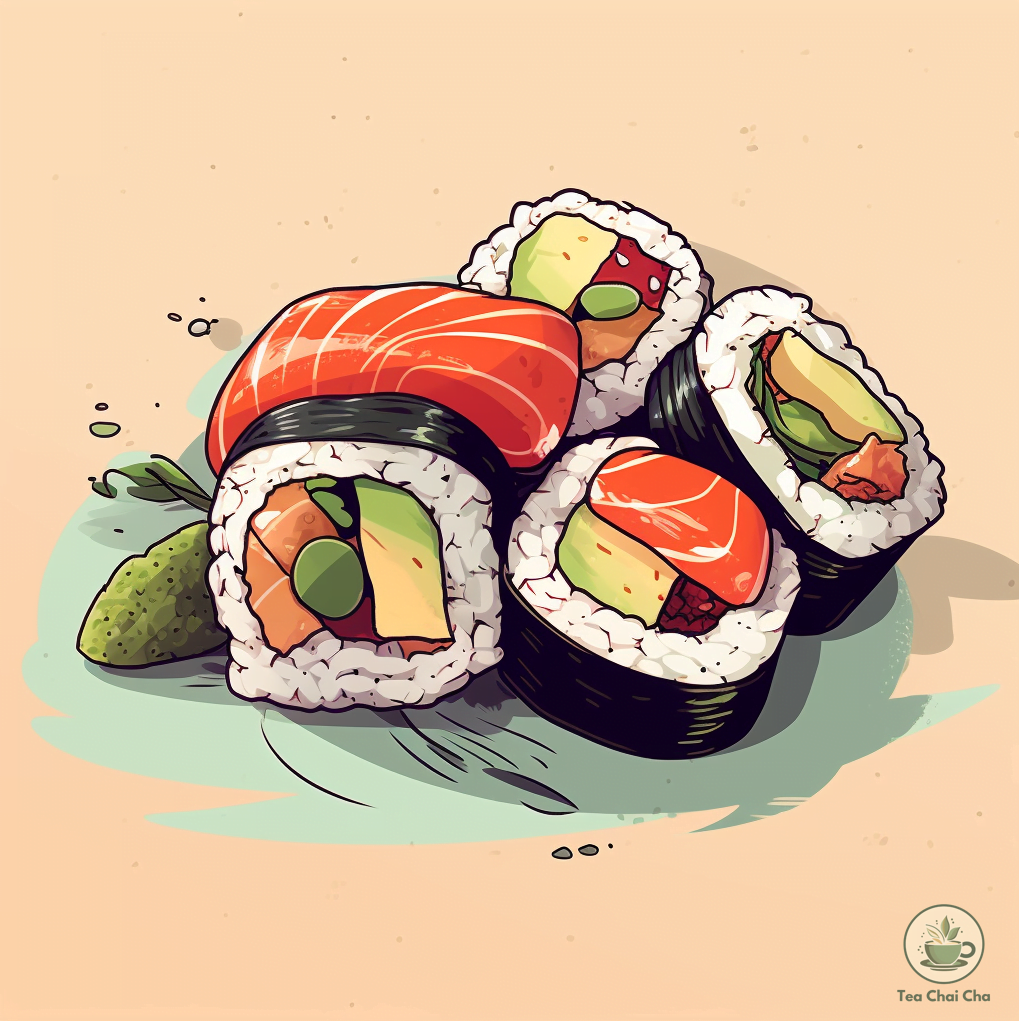
Rice Dishes or Sushi
Surprisingly, Darjeeling tea can also go well with certain savory options.
The tea’s slightly floral and brisk qualities can complement the flavors of rice dishes or even sushi.
The pairing creates an interesting contrast between the tea and the umami of the dishes.
Light Salads
Pairing Darjeeling tea with light salads, especially those with fruit elements like berries or citrus, can be a refreshing choice.
The floral and fruity notes of tea accentuates the flavors of the salad while offering a palate-cleansing effect.
Meats and Pasta Dishes
For heartier options, consider pairing Darjeeling tea with light meats such as chicken or turkey.
The tea’s delicacy can complement the savory flavors of the meat.
Additionally, its astringency can help cut through the richness of pasta dishes, creating a well-balanced combination.
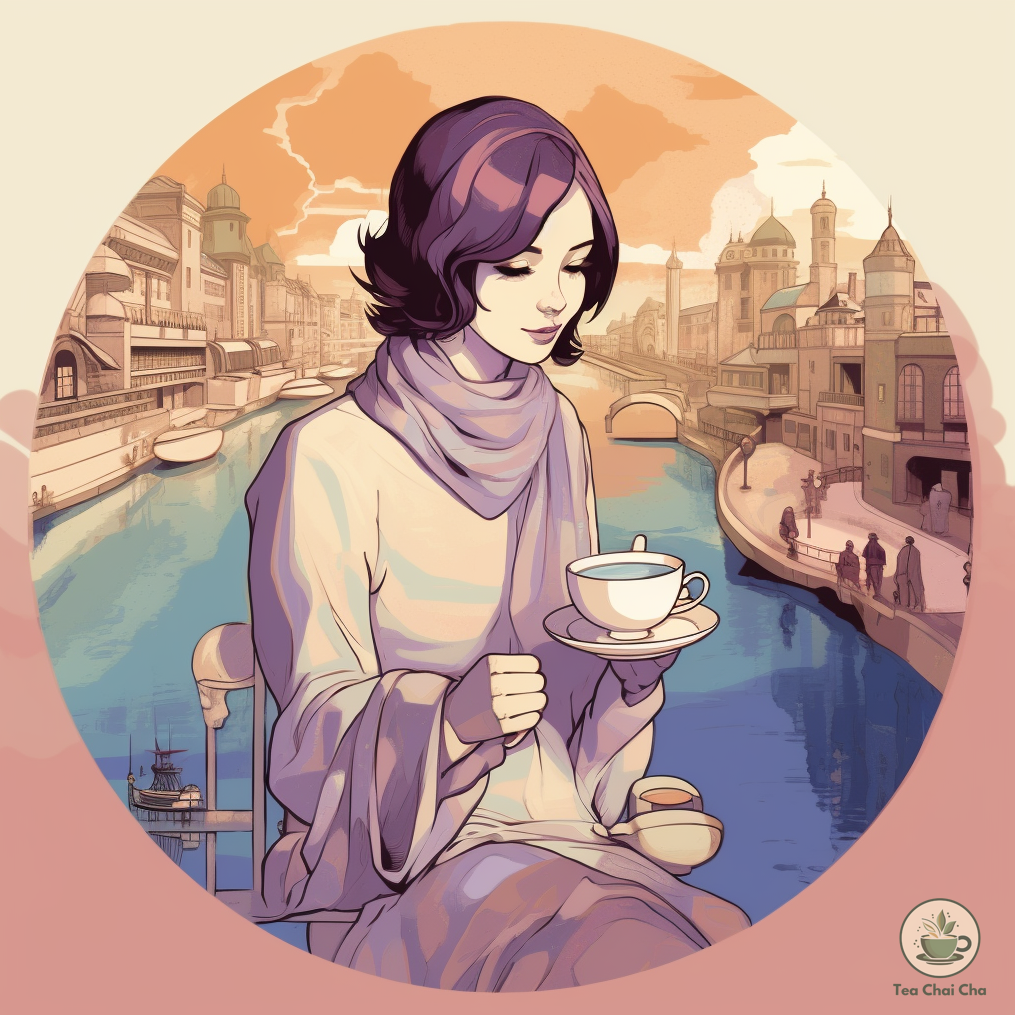
When to Drink Darjeeling Tea
Darjeeling tea is a delightful and delicate option that suits various occasions. Here’s when you might want to consider having it:
Morning Delight
Darjeeling tea is often referred to as the “Champagne of Teas” due to its delicate and complex flavors.
It’s a great choice to kickstart your day with a soothing cup.
The gentle caffeine content can provide a mild energy boost without overwhelming your system, making it perfect for a peaceful morning routine.
Afternoon Relaxation
When you’re looking for a moment of tranquility during the afternoon, Darjeeling tea comes to the rescue.
Its floral and fruity notes can help calm your mind as you take a break from your busy day. Pair it with a light snack for a delightful afternoon treat.
Teatime with Friends
Planning to catch up with friends? Darjeeling tea can be an elegant and sophisticated option.
Its unique flavors can be a great conversation starter, and the light taste won’t overpower your taste buds, allowing you to enjoy the company without distraction.
Special Celebrations
Whether it’s a birthday, anniversary, or any special occasion,
Darjeeling tea can add a touch of refinement to your celebrations.
Serve it as part of a tea party or as a standalone beverage to elevate the event’s ambiance.
Unwinding in the Evening
If you’re winding down after a long day, Darjeeling tea can provide a gentle way to relax.
Its lower caffeine content compared to morning teas makes it suitable for the evening, helping you unwind without disrupting your sleep.
Related

Black Darjeeling Tea Recipe
Recipe by Tania FaysalCuisine: Indian2
servings3
minutes10
minutes30
kcalA Delicate Cup of Darjeeling Tea for Two
Ingredients
2 cups of filtered water
2 teaspoons of loose-leaf Darjeeling tea
Sugar or honey to taste (optional)
Directions
- Heat the Water: Set your water to heat at 85-90 degrees Celsius (185-194 degrees Fahrenheit).
- Measure the Tea: While the water heats, measure 2 teaspoons of your Darjeeling tea leaves into your teapot.
- Steep the Tea: Once the water is heated, pour it over the tea leaves in the teapot. Allow it to steep for 3-5 minutes.
- Strain and Serve: Strain the tea into your favorite cups and serve immediately. For those who prefer a sweeter tea, you can add sugar or honey to taste.
Frequently Asked Questions (FAQs)
What does Darjeeling tea taste like?
Darjeeling tea tastes light and flavorful. It often has a delicate and slightly floral taste with hints of muscatel grape or even a bit nutty.
Some people say it’s like a mix of black and green tea flavors. Overall, it’s quite refreshing and enjoyable.
Does Darjeeling tea have caffeine?
Yes, Darjeeling tea does have caffeine about 70 to 120 mg, but the amount can vary. It generally contains less caffeine than a cup of coffee but more than herbal teas.
Is Darjeeling a real tea?
Absolutely, Darjeeling tea is indeed a real type of tea. It comes from the Darjeeling region in India and is known for its unique taste and quality.
How many calories in Darjeeling tea?
Darjeeling tea is very low in calories! A cup of plain Darjeeling tea typically has just a few calories, usually around 2-5 calories.
Of course, if you add sugar, milk, or other flavorings, the calorie count could go up, so keep that in mind if you’re watching your calories.
